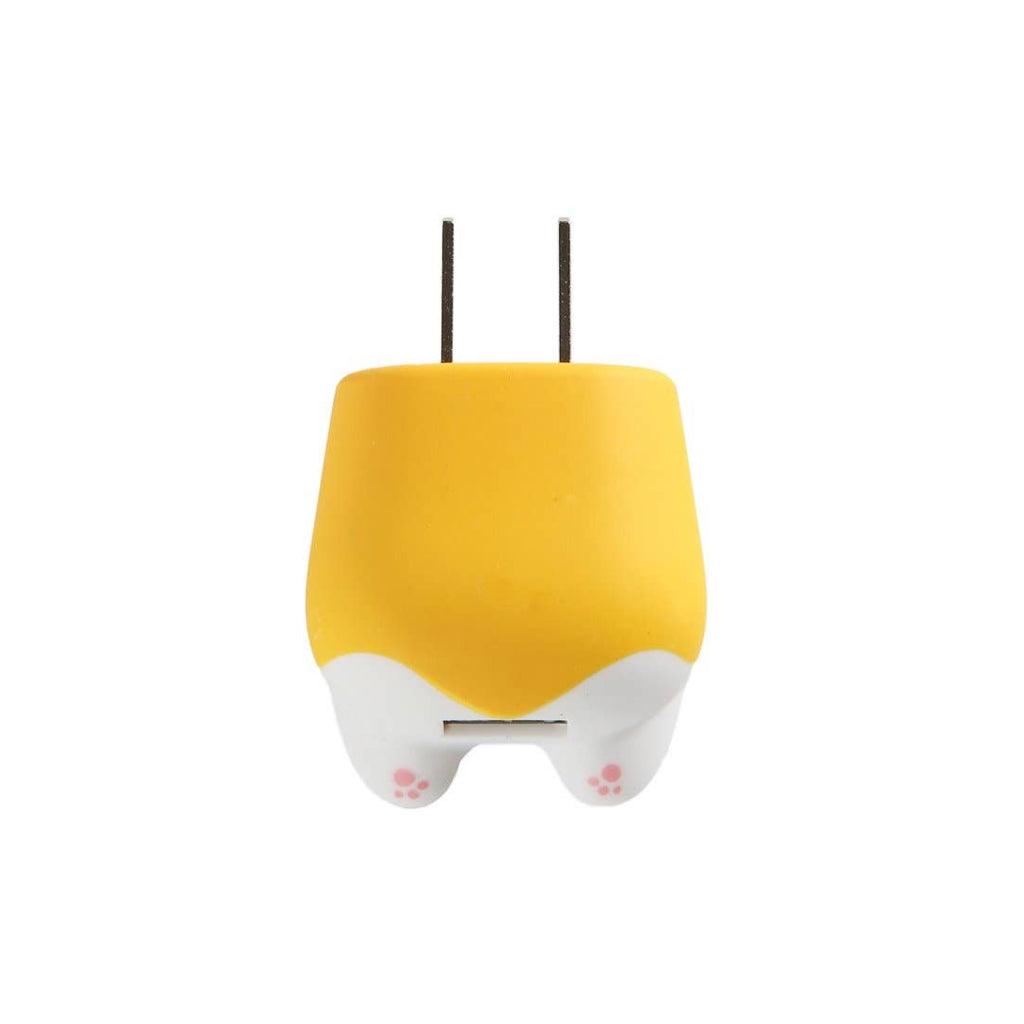Bringing Your Home to Life: What to know about Painting Supplies and Techniques
Unleash the Power of Color: A Guide to Painting Supplies and Techniques
Introduction:
Bringing Your Home to Life: What to know about Painting Supplies and Techniques
Painting is a powerful way to transform the look and feel of your home. Whether you're looking to refresh a tired space or add a personal touch to a new one, understanding painting supplies and techniques is essential. From choosing the right brushes and paints to mastering various application methods, this guide will provide you with the knowledge you need to bring your home to life through the art of painting.
The Essential Painting Supplies for DIY Home Improvement
Are you looking to give your home a fresh new look? Painting is a great way to transform any space and bring it to life. Whether you're a seasoned DIY enthusiast or a beginner, having the right painting supplies is essential for a successful home improvement project. In this article, we'll explore the must-have painting supplies and techniques that will help you achieve professional-looking results.
First and foremost, you'll need a good quality paintbrush. A high-quality brush will make a world of difference in the final outcome of your project. Look for brushes with synthetic bristles, as they are durable and work well with both oil-based and water-based paints. Additionally, consider the size of the brush. A larger brush is ideal for covering large areas quickly, while a smaller brush is perfect for detailed work and cutting in around edges and corners.
Next, you'll need a roller and roller cover. Rollers are excellent for painting large surfaces such as walls and ceilings. When choosing a roller cover, opt for one with a medium nap for smooth surfaces and a longer nap for textured surfaces. Additionally, consider the material of the roller cover. Synthetic covers are great for water-based paints, while natural covers work well with oil-based paints.
To protect your floors and furniture from paint splatters, you'll need drop cloths or plastic sheeting. Drop cloths are made from heavy-duty canvas and are reusable, making them a great investment. Plastic sheeting, on the other hand, is inexpensive and disposable, making it a convenient option for one-time use. Whichever option you choose, make sure to cover all surfaces that you don't want to get paint on.
Preparation is key when it comes to painting, so don't forget to stock up on painter's tape. Painter's tape is designed to create clean, straight lines and prevent paint from bleeding onto adjacent surfaces. It's perfect for taping off trim, baseboards, and windows. Look for a tape that is easy to apply and remove without leaving behind any residue.
In addition to the basic supplies, there are a few other tools that can make your painting project easier and more efficient. A paint tray is essential for holding and distributing paint to your roller or brush. Look for a tray with a liner for easy cleanup. A paint can opener is also handy for opening paint cans without damaging the lid. And don't forget about a stir stick to thoroughly mix the paint before applying it.
Now that you have all the necessary supplies, let's talk about some painting techniques that will help you achieve professional-looking results. Before you start painting, make sure to clean and prep the surface properly. Remove any dirt, dust, or grease, and fill in any holes or cracks with spackle or putty. Sand the surface lightly to create a smooth and even base for the paint.
When it comes to applying the paint, start with a technique called cutting in. This involves using a brush to paint along the edges and corners before using a roller to cover the larger areas. Cutting in ensures a clean and precise finish. When using a roller, make sure to apply even pressure and use long, smooth strokes for a consistent coat of paint.
Lastly, don't rush the drying process. Allow each coat of paint to dry completely before applying another one. This will prevent smudging and ensure a smooth and professional finish. And remember, patience is key when it comes to painting!
In conclusion, having the right painting supplies and techniques is crucial for a successful home improvement project. Invest in high-quality brushes, rollers, and other tools to achieve professional-looking results. Don't forget to properly prepare the surface and take your time when applying the paint. With the right supplies and techniques, you'll be able to bring your home to life with a fresh new coat of paint. Happy painting!
Exploring Different Paintbrushes and Their Uses
Are you looking to give your home a fresh new look? Painting is a great way to transform any space and bring it to life. But before you dive into your painting project, it's important to understand the different painting supplies and techniques available to you. In this article, we will be exploring different paintbrushes and their uses, so you can make an informed decision when it comes to selecting the right tools for your project.
First, let's talk about the different types of paintbrushes. There are two main categories: natural bristle brushes and synthetic bristle brushes. Natural bristle brushes are made from animal hair, typically hog or ox hair. These brushes are best suited for oil-based paints, as they have the ability to hold and distribute the paint evenly. Synthetic bristle brushes, on the other hand, are made from nylon or polyester. These brushes are ideal for water-based paints, as they don't absorb as much water and are easier to clean.
Within these two categories, there are various shapes and sizes of brushes to choose from. The most common shapes include flat brushes, angled brushes, and round brushes. Flat brushes are great for large, flat surfaces, while angled brushes are perfect for cutting in and creating clean lines. Round brushes are versatile and can be used for both detail work and broader strokes. It's important to consider the size of the brush as well, as larger brushes are better suited for larger areas, while smaller brushes are ideal for intricate work.
Now that you have a better understanding of the different types of paintbrushes, let's discuss their uses. Flat brushes are perfect for painting walls, ceilings, and large furniture pieces. Their wide, flat shape allows for quick and even coverage. Angled brushes, on the other hand, are great for painting corners, edges, and trim. The angled bristles make it easier to navigate tight spaces and create precise lines. Round brushes are versatile and can be used for a variety of tasks, such as painting small details, blending colors, and creating texture.
When it comes to selecting the right brush for your project, it's important to consider the type of paint you will be using. For oil-based paints, natural bristle brushes are the way to go. Their ability to hold and distribute the paint evenly will result in a smooth and professional finish. If you're working with water-based paints, synthetic bristle brushes are your best bet. They are easier to clean and won't absorb as much water, allowing for better control and coverage.
In conclusion, choosing the right paintbrush for your project is essential for achieving the desired results. Understanding the different types of brushes and their uses will help you make an informed decision. Whether you're painting walls, trim, or furniture, there is a brush out there that is perfect for the job. So, before you embark on your next painting adventure, take the time to explore the different paintbrushes available and select the one that will bring your home to life. Happy painting!
Mastering Paint Rollers for a Flawless Finish
Are you looking to give your home a fresh new look? Painting is a great way to transform any space and bring it to life. But before you dive into your painting project, it's important to understand the different painting supplies and techniques that can help you achieve a flawless finish. In this article, we'll focus on mastering paint rollers, a versatile tool that can make your painting process a breeze.
When it comes to paint rollers, there are a few key factors to consider. First, you'll want to choose the right roller cover for your project. Roller covers come in different materials, such as synthetic or natural fibers, and different nap lengths. The nap length refers to the thickness of the fibers on the roller cover, and it can vary from short to long. For smooth surfaces, a short nap roller cover is ideal, while a longer nap is better for textured surfaces.
Once you've selected the right roller cover, it's time to load your roller with paint. Start by pouring your paint into a roller tray, making sure to fill it only about halfway to avoid spills. Dip your roller into the paint, rolling it back and forth in the tray to evenly distribute the paint on the roller cover. Be careful not to overload the roller, as this can lead to drips and an uneven finish.
Now that your roller is loaded with paint, it's time to start rolling it onto your walls. Begin by rolling the paint onto the wall in a "W" or "M" shape, covering an area of about 2 to 3 feet wide. This technique helps to evenly distribute the paint and prevent streaks. Once you've covered the area with the initial shape, go back over it with vertical or horizontal strokes to smooth out the paint and create a seamless finish.
As you continue painting, be mindful of the pressure you apply to the roller. Too much pressure can cause the paint to splatter, while too little pressure may result in an uneven application. Aim for a consistent and even pressure as you roll the paint onto the walls.
If you're painting a large area, it's important to maintain a wet edge. This means that you should always be working on a section of the wall that is still wet, as this helps to blend the paint and avoid visible lines or marks. To maintain a wet edge, work in small sections and overlap each stroke slightly with the previous one.
Once you've finished painting a section, take a step back and inspect your work. Look for any areas that may need touch-ups or additional coats of paint. It's better to catch any imperfections early on and address them before the paint dries.
When you're done painting, it's important to properly clean your roller. Remove the roller cover from the roller frame and rinse it with warm water until the water runs clear. Use your hands or a brush to remove any excess paint from the roller cover. Allow it to dry completely before storing it for future use.
Mastering paint rollers is a skill that can greatly enhance your painting projects. By choosing the right roller cover, loading your roller properly, and using the right techniques, you can achieve a flawless finish that brings your home to life. So, grab your roller and get ready to transform your space with a fresh coat of paint!
Wall Painting Techniques to Transform Your Home

Are you tired of the same old look in your home? Do you want to bring some life and personality into your living space? Well, look no further! In this article, we will explore some wall painting techniques that can transform your home and give it a fresh new look.
One of the easiest and most effective ways to change the look of a room is by using different paint colors. By simply painting your walls a new color, you can completely transform the atmosphere of a space. Whether you want to create a cozy and warm environment or a bright and vibrant one, the possibilities are endless.
But before you start painting, it's important to gather the right supplies. The most basic painting supplies you will need include paint brushes, rollers, drop cloths, painter's tape, and a paint tray. These supplies can be found at your local hardware store or online. Make sure to choose high-quality brushes and rollers to ensure a smooth and even finish.
Once you have your supplies ready, it's time to choose the right technique for your desired look. One popular technique is called color blocking. This involves painting different sections of a wall in different colors to create a bold and modern look. You can use painter's tape to create clean lines between the different colors, ensuring a professional finish.
Another technique that can add depth and texture to your walls is called sponging. This involves using a sponge to apply paint in a dabbing motion, creating a mottled effect. Sponging is a great way to add visual interest to a room without overwhelming the space. You can experiment with different colors and sponge sizes to achieve the desired effect.
If you're feeling adventurous, you can try your hand at stenciling. Stenciling involves using a stencil to create a pattern or design on your walls. This technique allows you to add intricate details and personalize your space. You can find a wide variety of stencils online or at your local craft store. Just make sure to secure the stencil firmly to the wall and use a small brush or sponge to apply the paint.
For those who prefer a more subtle approach, a technique called ombre painting might be the perfect choice. Ombre painting involves blending different shades of the same color to create a gradient effect. This technique can add a touch of elegance and sophistication to any room. Start by painting the bottom of the wall with the darkest shade and gradually lighten the color as you move up.
No matter which technique you choose, it's important to take your time and be patient. Painting can be a messy process, but with the right supplies and techniques, you can achieve professional-looking results. Remember to protect your floors and furniture with drop cloths and use painter's tape to create clean lines. And most importantly, have fun and let your creativity shine!
In conclusion, painting your walls is a great way to bring your home to life and give it a fresh new look. By choosing the right supplies and techniques, you can transform any room into a space that reflects your personality and style. So grab your paint brushes and get ready to unleash your inner artist!
Incorporating Interior Design with Paint Colors
Are you looking to give your home a fresh new look? One of the easiest and most effective ways to do this is by incorporating interior design with paint colors. Painting your walls can completely transform the atmosphere of a room, making it feel more vibrant, cozy, or sophisticated. But before you grab a paintbrush and start slapping on some color, there are a few things you should know about painting supplies and techniques.
First and foremost, it's important to choose the right paint color for your space. The color you choose will set the tone for the entire room, so take some time to consider the mood you want to create. If you're looking for a calming and serene atmosphere, consider using cool colors like blues and greens. On the other hand, if you want to create a warm and inviting space, opt for warmer colors like yellows and oranges. Don't be afraid to experiment with different shades and tones to find the perfect color for your room.
Once you've chosen your paint color, it's time to gather your painting supplies. You'll need a few essential items, including paintbrushes, rollers, drop cloths, and painter's tape. It's important to invest in high-quality brushes and rollers to ensure a smooth and even application of paint. Cheap brushes can leave streaks and bristles behind, which can ruin the overall finish of your walls. Additionally, using drop cloths and painter's tape will help protect your floors, furniture, and trim from accidental paint splatters.
Before you start painting, it's crucial to properly prepare your walls. This includes cleaning them to remove any dirt, dust, or grease that may prevent the paint from adhering properly. You may also need to patch any holes or cracks in the walls and sand them down for a smooth surface. Taking the time to properly prepare your walls will ensure a professional-looking finish and help your paint job last longer.
When it comes to actually painting your walls, there are a few techniques you can use to achieve different effects. One popular technique is called "cutting in," which involves using a brush to paint along the edges and corners of the walls before using a roller to fill in the larger areas. This technique helps create clean and crisp lines, giving your walls a polished look. Another technique is called "sponging," which involves using a sponge to create a textured or mottled effect on the walls. This technique can add depth and visual interest to your space.
As you paint, be sure to take breaks and step back to assess your progress. This will allow you to catch any mistakes or areas that need touch-ups before it's too late. It's also important to apply multiple coats of paint, allowing each coat to dry completely before applying the next. This will ensure a more even and durable finish.
Incorporating interior design with paint colors is a fun and creative way to bring your home to life. By choosing the right paint color, gathering the necessary supplies, properly preparing your walls, and using different painting techniques, you can transform your space into a beautiful and inviting oasis. So grab your paintbrush and get ready to unleash your inner artist!
Helpful Tips for a Successful Home Renovation Project
Are you thinking about giving your home a fresh new look? Painting is a great way to transform the appearance of your space and bring it to life. However, before you dive into your home renovation project, it's important to understand the different painting supplies and techniques that can help you achieve the best results.
First and foremost, you'll need to gather the necessary painting supplies. The basics include paint brushes, rollers, paint trays, drop cloths, painter's tape, and a ladder. These tools will help you apply the paint smoothly and protect your floors and furniture from any accidental spills or splatters. It's always a good idea to invest in high-quality brushes and rollers to ensure a professional finish.
Once you have your supplies ready, it's time to choose the right paint for your project. There are various types of paint available, such as latex, oil-based, and acrylic. Latex paint is the most commonly used due to its durability, easy cleanup, and low odor. Oil-based paint, on the other hand, provides a smoother finish and is ideal for high-traffic areas. Acrylic paint is a versatile option that can be used on both interior and exterior surfaces.
Before you start painting, it's crucial to prepare the surfaces properly. This involves cleaning the walls, patching any holes or cracks, and sanding rough areas. By doing so, you'll ensure that the paint adheres well and the final result is flawless. Additionally, applying a primer before painting can help improve the coverage and longevity of the paint.
Now that you're ready to paint, it's important to use the right technique. Start by cutting in, which means using a brush to paint along the edges and corners of the walls. This will create a clean and precise finish. Once you've cut in, you can use a roller to cover the larger areas. Remember to work in small sections and apply the paint in a "W" or "M" shape to ensure even coverage. It's also important to maintain a wet edge, which means overlapping each stroke while the paint is still wet to avoid visible lines.
If you're painting a room with multiple walls, it's best to work from top to bottom and left to right. This will help you avoid any drips or smudges. Don't forget to take breaks and step back to assess your progress. This will allow you to spot any missed spots or uneven areas and make the necessary touch-ups.
Once you've finished painting, it's time to clean up. Remove any painter's tape while the paint is still wet to prevent it from peeling off. Clean your brushes and rollers thoroughly with soap and water or the appropriate solvent, depending on the type of paint you used. Properly store your painting supplies for future use.
In conclusion, painting is a fantastic way to breathe new life into your home. By understanding the different painting supplies and techniques, you can ensure a successful home renovation project. Remember to gather the necessary supplies, choose the right paint, prepare the surfaces, and use the appropriate techniques. With a little bit of patience and effort, you'll be amazed at the transformation your home undergoes. Happy painting!
Creative Ways to Decorate Your Home with Paint
Are you tired of the same old look in your home? Do you want to add a touch of creativity and personality to your living space? Look no further than the power of paint! Painting is a fantastic way to transform your home and bring it to life. In this article, we will explore some creative ways to decorate your home with paint, as well as provide you with some tips on painting supplies and techniques.
One of the easiest and most effective ways to use paint to decorate your home is by creating an accent wall. An accent wall is a single wall in a room that is painted a different color than the other walls. This can add depth and visual interest to your space. Choose a color that complements the existing color scheme in the room, or go bold with a contrasting color for a dramatic effect. Remember, the key to a successful accent wall is to choose a color that enhances the overall aesthetic of the room.
Another creative way to decorate your home with paint is by using stencils. Stencils are a great way to add patterns and designs to your walls, furniture, or even floors. You can find a wide variety of stencils at your local craft store or online. Simply secure the stencil to the surface you want to paint, and then use a brush or sponge to apply the paint. This technique allows you to create intricate designs and patterns that will truly make your home stand out.
If you're feeling particularly adventurous, consider trying your hand at mural painting. Murals are a fantastic way to add a unique and personalized touch to your home. Whether you want to create a whimsical scene in a child's bedroom or a serene landscape in your living room, mural painting allows you to unleash your creativity and bring your vision to life. Don't worry if you're not an experienced artist – there are plenty of resources available online that can guide you through the process step by step.
Now that we've explored some creative ways to decorate your home with paint, let's talk about the supplies and techniques you'll need to bring your vision to life. When it comes to painting supplies, it's important to invest in high-quality brushes and rollers. These tools will ensure a smooth and even application of paint, resulting in a professional-looking finish. Additionally, don't forget to stock up on drop cloths and painter's tape to protect your floors and trim from accidental spills and splatters.
As for painting techniques, it's important to start with a clean and properly prepared surface. This means removing any dirt, dust, or grease and applying a primer if necessary. When applying the paint, use long, even strokes and work from top to bottom. This will help to prevent streaks and drips. If you're painting a large area, consider using a paint sprayer for a more efficient and even application.
In conclusion, painting is a fantastic way to bring your home to life and add a touch of creativity and personality to your living space. Whether you choose to create an accent wall, use stencils, or try your hand at mural painting, the possibilities are endless. Just remember to invest in high-quality supplies and use proper painting techniques for the best results. So go ahead, grab a paintbrush, and let your imagination run wild!
Must-Have Home Improvement Tools for Painting Projects
Are you looking to give your home a fresh new look? Painting is a great way to transform any space and bring it to life. Whether you're a seasoned DIY enthusiast or a beginner, having the right painting supplies and tools is essential for a successful project. In this article, we'll explore some must-have home improvement tools for painting projects that will help you achieve professional-looking results.
First and foremost, you'll need a good quality paintbrush. A high-quality brush will make a world of difference in the final outcome of your project. Look for brushes with synthetic bristles, as they tend to hold paint better and provide a smoother finish. Additionally, consider the size of the brush. A larger brush is ideal for covering large areas quickly, while a smaller brush is perfect for detailed work and cutting in around edges and corners.
Next on the list is a roller and roller cover. Rollers are excellent for painting large surfaces such as walls and ceilings. When choosing a roller cover, opt for one with a medium nap for most interior walls. A longer nap is better suited for textured surfaces, while a shorter nap is ideal for smooth surfaces. Remember to choose a roller frame that is compatible with the roller cover you've selected.
To protect your floors and furniture from paint splatters and spills, invest in drop cloths or plastic sheeting. Drop cloths are typically made of canvas or heavy-duty fabric and are reusable, making them a more eco-friendly option. Plastic sheeting, on the other hand, is inexpensive and disposable, making it a convenient choice for one-time use. Whichever option you choose, make sure to secure the coverings properly to prevent any accidents.
Another essential tool for any painting project is painter's tape. This tape is specifically designed to create clean, straight lines and prevent paint from bleeding onto adjacent surfaces. Apply the tape along the edges of trim, baseboards, and any other areas you want to protect. When removing the tape, do it carefully and at a 45-degree angle to avoid peeling off any fresh paint.
In addition to these basic tools, there are a few other items that can make your painting project easier and more efficient. A paint tray or bucket is essential for holding and mixing paint. Look for one with a built-in grid to remove excess paint from your roller or brush. A paint can opener is also handy for opening paint cans without damaging the lid or spilling any paint.
Lastly, don't forget about safety equipment. Painting can involve exposure to fumes and chemicals, so it's important to protect yourself. Wear a respirator mask to filter out harmful particles and vapors. Safety goggles will shield your eyes from any splatters or debris. And don't forget to wear old clothes or a painting smock to protect your clothing from accidental spills or drips.
By having these must-have home improvement tools for painting projects, you'll be well-equipped to tackle any painting job with confidence. Remember to choose high-quality brushes and rollers, protect your surfaces with drop cloths or plastic sheeting, use painter's tape for clean lines, and invest in safety equipment. With the right tools and techniques, you'll be able to bring your home to life and create a space that reflects your personal style. Happy painting!
Conclusion
In conclusion, when it comes to bringing your home to life through painting, it is important to have a good understanding of painting supplies and techniques. By choosing the right tools and materials, such as brushes, rollers, and paints, you can achieve professional-looking results. Additionally, learning and practicing various painting techniques, such as cutting in, rolling, and blending, can help you create beautiful and visually appealing finishes. Taking the time to research and invest in quality painting supplies, as well as honing your skills in different techniques, will greatly enhance your painting projects and transform your home into a vibrant and inviting space.







